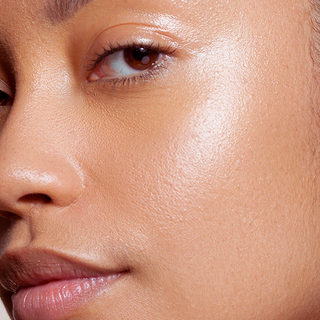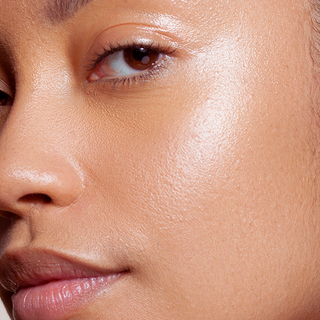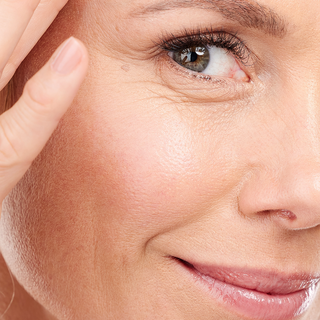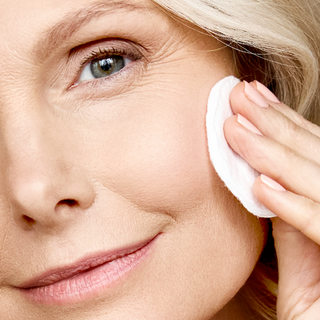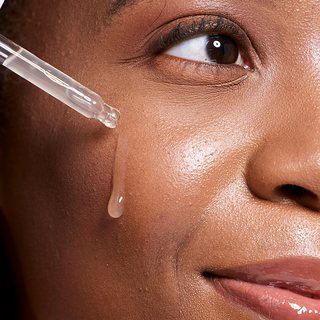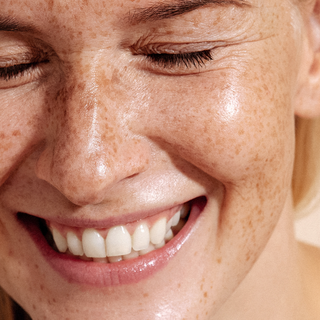Azelaic acid and tretinoin are clinically proven powerhouses for treating acne, hyperpigmentation, and uneven skin texture. Used alone or together, they can transform your skin, if you know how to layer and tolerate them correctly. Here's how to safely and effectively use both.
What Is Azelaic Acid And What Does It Do?
Azelaic acid doesn’t get the hype it deserves, but in my book, it’s a quiet overachiever. It’s a naturally occurring acid, technically a dicarboxylic acid, found in grains like barley, wheat, and rye.
But don’t let the word “acid” scare you.
Unlike exfoliants that can leave skin raw and reactive, azelaic acid is surprisingly gentle, especially for how much it does. Here’s what makes it special:
-
It tackles acne at the root.
Azelaic acid has antimicrobial properties that target Cutibacterium acnes, the bacteria responsible for breakouts. If you’re dealing with inflamed, hormonal, or persistent acne, this is your friend. -
It calms inflammation.
Think redness, swelling, even rosacea, azelaic acid helps dial it down without compromising your barrier. -
It fades dark spots.
By inhibiting tyrosinase (the enzyme that fuels melanin production), it helps reduce hyperpigmentation and post-acne marks. -
It encourages skin turnover.
But unlike retinoids, it doesn’t push your skin into purge-mode or flaking territory. It gently nudges your skin toward renewal without the drama.
🔬 Why Percentage Matters
This is where things get interesting, and a little misunderstood. The concentration of azelaic acid determines how effective (and how intense) it is.
-
10% is what you’ll find over the counter. It’s perfect for beginners or anyone easing into actives. You’ll still see improvements in texture and tone, it just may take a little longer.
-
15–20% is prescription strength, and in my clinical experience, that’s where the magic really happens, especially for deeper pigmentation and stubborn breakouts. But that potency comes with a caveat: skin prep is essential. Think hydration, barrier support, and intentional layering (which we’ll get into later).
If you’re pregnant, azelaic acid is also one of the few active ingredients that’s both safe and effective, making it an excellent alternative to retinoids during that phase of life.
In short? It’s multi-tasking, inflammation-calming, pigment-fading, and barrier-friendly.
Basically, it earns its spot in any smart skincare routine. Especially if you're tired of cycling through harsh treatments that do more harm than good.
What Is Tretinoin And What Does It Do?
Tretinoin (also called all-trans retinoic acid) is a prescription-strength retinoid derived from vitamin A. It’s not some trendy newcomer.
This is one of the most studied, results-driven ingredients we have in the professional skincare space, and I’ve seen it transform skin from dull, congested, and inflamed to smooth, radiant, and resilient.
So, what does it actually do?
-
It speeds up skin cell turnover.
Your skin naturally sheds and renews itself, but as we age, or when hormones go haywire, that process slows down. Tretinoin puts that renewal back into high gear. -
It clears out pores.
This makes it a gold-standard treatment for comedonal acne (those stubborn blackheads and clogged bumps that never seem to surface). -
It stimulates collagen.
Translation: it helps soften fine lines, firm the skin, and improve texture. If you’re in your 30s or beyond, this alone is worth its weight in gold. -
It fades discoloration.
Tretinoin is incredibly effective at treating post-acne marks, sun spots, and melasma, especially when combined with pigment inhibitors like azelaic acid.
⚠️ Choosing The Right Strength
Tretinoin typically comes in strengths like 0.025%, 0.05%, and 0.1%, and the truth is, even the lowest strength can deliver amazing results, if you use it consistently and smartly.
I can’t tell you how many clients I’ve helped walk back from a full-blown skin freakout because they jumped into a high-strength formula without preparing their skin first.
-
Start with 0.025% if you’re new to retinoids or have sensitive skin.
-
0.05% is a solid middle ground, great for clients who’ve already used retinol or have mild photoaging.
-
0.1% is best for those with more resilient skin and deeper concerns (but only once your skin is well-adjusted).
And no matter what strength you’re using, barrier support is non-negotiable. Think moisturizers, gentle cleansers, and lots of hydration. In my practice, we always layer tretinoin with intention, not just for results, but for long-term skin health.
Bottom line? Tretinoin is potent, powerful, and proven, but only when used correctly. When clients commit to the process (not just the product), that’s when the glow-up becomes real.
Azelaic Acid Vs Tretinoin: Which One Does What Best?
One of the most common questions I get, especially during consultations, is: “If I can only use one, which should it be?” And while I love a straight answer, skincare rarely plays by black-and-white rules.
Both azelaic acid and tretinoin are heavy-hitters, but they shine in different arenas.
Here’s how I break it down for my clients:
|
Skin Concern |
Azelaic Acid |
Tretinoin |
|
Acne |
✓✓✓ (targets inflammation + bacteria) |
✓✓✓ (unclogs pores + regulates turnover) |
|
Hyperpigmentation |
✓✓✓ (brightens and fades dark spots) |
✓✓ (supports pigment shedding) |
|
Redness/Rosacea |
✓✓✓ (calms inflammation) |
✗ (may be too harsh for reactive skin) |
|
Fine Lines |
✓ (mild softening via cell renewal) |
✓✓✓ (stimulates collagen and elasticity) |
|
Skin Texture |
✓✓ (refines without peeling) |
✓✓✓ (resurfaces and smooths over time) |
So, Which One’s “Better”?
It depends on your goals, and your skin’s personality.
If you’re struggling with rosacea, redness, or pigment from hormonal acne, azelaic acid might be your MVP. If texture, clogged pores, and early signs of aging are your top concerns, tretinoin is unmatched.
But here’s the real secret: they don’t need to compete. Used together (smartly and strategically), they can tackle multiple concerns without overwhelming your skin.
In my practice, we often pair azelaic acid with a low-to-mid strength tretinoin for clients who want to treat acne and discoloration while building resilience against fine lines and sun damage. It’s all about balance, consistency, and not overdoing it with overlapping actives.
Can You Use Azelaic Acid And Tretinoin Together?
Yes, you can use azelaic acid and tretinoin together.
But should you?
That depends on your skin’s current state, your tolerance, and how the rest of your routine is set up.
In the treatment room and with clients online, this is one of the most misunderstood pairings. People hear “double the actives, double the results”, but that’s rarely how skin works. These two are potent, and while they complement each other beautifully, they also demand respect.
✅ When It Makes Sense To Combine Them:
-
You’ve built a tolerance to tretinoin. If your skin is past the adjustment phase, meaning less flaking, minimal redness, and no active irritation, you’re likely ready to layer.
-
You’re targeting more than one concern. This duo works best when you’re treating acne and hyperpigmentation, or texture and dark spots. They address different pathways in the skin, which is why combining them can lead to more comprehensive results.
You’re using a prescription-strength azelaic acid (15–20%) with a low to mid-strength tretinoin (0.025–0.05%). Higher doesn’t always mean better, what matters most is how your skin tolerates and responds.
❌ When To Press Pause:
-
You’ve just started tretinoin. Please don’t add azelaic acid right away. Tretinoin has its own “getting-to-know-you” period. Give your skin 6–8 weeks to adjust before layering anything else that could cause sensitivity.
-
You’re dealing with peeling, stinging, or redness. This is your skin’s way of saying, “I need a break.” Don’t power through. Swap in calming, hydrating products instead.
-
You’re using other exfoliants. If your routine already includes AHAs, BHAs, or glycolic/salicylic acid, adding this duo could be too much. Over-exfoliation is a fast track to barrier damage, and no glow is worth that.
The goal isn’t to be aggressive, it’s to be effective and sustainable. You want results that last, not a 2-week glow followed by 3 months of recovery.
So yes, azelaic acid and tretinoin can be a dream team, but only when the timing, strength, and layering are dialed in.
How To Layer Azelaic Acid And Tretinoin In Your Skincare Routine
Here’s the truth: great skincare isn’t just about what you use, it’s about how you use it. I’ve seen incredible results (and avoidable irritation) all hinge on one thing: proper layering.
When you’re working with powerhouse ingredients like azelaic acid and tretinoin, that step-by-step approach really matters.
Whether you’re building your routine from scratch or refining what you already have, this simple breakdown will help you layer smart, not harsh.
🧴 Your Routine, Step By Step
AM Routine
-
Gentle cleanser – Don’t strip your barrier first thing in the morning.
-
Check out → Soothing Peptide Cleanser
-
Hydrating toner (optional) – Think of this as your skin’s “primer” if it’s feeling dry or dehydrated.
-
Azelaic acid – This is your morning multitasker: calming inflammation, fading spots, and preventing new breakouts.
-
Check out → Advanced Polishing Pads
-
Moisturizer – Go for something lightweight, fragrance-free, and non-comedogenic.
-
Check out → Barrier Replenishing Cream
-
Broad-spectrum SPF – This is non-negotiable. Tretinoin (even from last night) makes your skin more vulnerable to UV damage. Protect that progress.
-
Check out → Illuminating Beauty Balm SPF 44
PM Routine
-
Cleanser – Wash off the day, but stay away from anything “deep-cleansing” or foamy if you’re using actives.
-
Moisturizer (wait 5–10 minutes) – This step preps your skin and acts as a buffer before tretinoin.
-
Tretinoin – A pea-sized amount is plenty. Apply it evenly over your face.
-
Moisturizer again (if needed) – If you’re dry, flaky, or just building tolerance, sandwiching tretinoin with moisture can make a huge difference.
-
Check out → Nourishing HA Peptide Serum
💡 Layering Tips That Make Or Break Your Results
-
Apply products from thinnest to thickest. If one is a serum and the other is a cream, the serum goes first.
-
Let tretinoin breathe. Give it 20–30 minutes before layering anything on top. This gives your skin time to absorb the active without dilution or interference.
-
Alternate nights at first. This is especially important if you’re new to either ingredient. Think: azelaic acid on Mondays and Wednesdays, tretinoin on Tuesdays and Fridays. Your skin will thank you for the pacing.
-
Barrier repair is part of the plan. Plan at least one “no-active” night per week to focus solely on hydration and recovery.
Pro Tip
If your tretinoin is a cream and your azelaic acid is a gel (or vice versa), the order still depends on consistency: gel first, cream second.
But always prioritize tolerance over textbook rules, if your skin is getting cranky, it’s time to simplify, not stack.
What Not To Mix With Azelaic Acid And Tretinoin
Let me say this clearly: more actives don’t mean better results, just more irritation. One of the most common reasons clients walk into my treatment room with angry, sensitized skin is because they’re layering powerful ingredients that should never be friends.
When you’re using azelaic acid and tretinoin, two highly effective actives, you’ve already got a lot working in your favor. Your job is to support that routine, not sabotage it by overloading your skin.
⚠️ Avoid Pairing With:
-
Benzoyl peroxide: Especially at night with tretinoin, it can oxidize and deactivate tretinoin completely. If you’re prescribed both, use them at different times of day or on alternate nights under your provider’s guidance.
-
High-dose AHAs/BHAs: Glycolic acid, lactic acid, and salicylic acid can exacerbate irritation when layered with tretinoin or azelaic acid. Too many exfoliants = damaged barrier, flaking, and long-term sensitivity.
-
Vitamin C (L-ascorbic acid form): Though it’s a favorite for brightening, it can increase stinging or redness when layered directly with either active, especially for sensitive skin or rosacea-prone types.
-
Fragrance-heavy moisturizers: Fragrance is one of the most common irritants I see in clients struggling with reactivity. When your skin is adjusting to actives, fragrance-free is non-negotiable.
✅ Safe, Skin-Loving Add-Ons:
-
Niacinamide: This is a dream pairing. It helps calm redness, reduce inflammation, and even boost the brightening effects of azelaic acid. You’ll find it in our Nourishing HA Peptide Serum and Illuminating Beauty Balm SPF 44 for a reason.
-
Hyaluronic Acid: Think of this as hydration insurance. It plumps, soothes, and prevents tightness or peeling that can come with tretinoin use. Try our Nourishing HA Peptide Serum if your skin feels thirsty mid-routine.
-
Ceramide Creams: These are foundational for repairing and strengthening the skin barrier. When in doubt, moisturize, then moisturize again. I recommend our Barrier Replenishing Cream for post-active recovery nights.
How To Adjust To Using Azelaic Acid And Tretinoin
If you’re serious about transformation, not just a quick fix, then this part is everything. Because what no one tells you is that even the most effective ingredients can backfire if your skin isn’t ready.
I’ve seen it too many times: peeling, redness, stinging, and clients thinking they’ve “ruined” their face. You haven’t. Your skin’s just overwhelmed.
Here’s how to avoid that entirely, with a slow, steady rhythm that respects your barrier, your goals, and your real life.
🌱 Start Low, Go Slow
When I guide clients through this routine, the real magic isn’t in the products alone, it’s in the consistency, patience, and trust they build along the way. That’s what makes the glow sustainable.
And pay attention to this: no matter how excited you are (and I swear, I get it!), more isn’t better when it comes to actives. Give your skin time to build tolerance, and results will come, without the irritation.
Week 1–2
➡️ Start with azelaic acid, 2–3 times per week in the morning.
It’s gentle enough for most skin types, but if you’re sensitive or prone to dryness, even this can take time to adjust to.
Week 3–4
➡️ Introduce tretinoin at night, on alternate nights.
Apply it over a thin layer of Barrier Replenishing Cream to buffer the intensity while still reaping the long-term benefits.
Week 5+
➡️ Begin layering cautiously, only if your skin feels stable.
If you’ve made it through weeks 3–4 with minimal peeling or redness, you can try using both (azelaic acid in the morning, tretinoin at night). But if there’s any irritation? Pull back. Listen to your skin.
❤️ Pro Tips For A Smooth Transition
-
Patch test every new product, especially actives. Apply to a small area (like your jawline) before going full-face.
-
Expect some flaking or redness in the first month. It’s common, it’s not failure. Hydrate, stay consistent, and trust the process.
-
Schedule one “barrier repair night” each week with no actives, just rich, replenishing hydration. Your skin needs downtime too.
-
Hydration isn’t just topical. Drink water, sleep deeply, move your body. Beautiful skin reflects how you care for your whole self.
Results Without The Irritation
Azelaic acid and tretinoin are a skin-transforming duo when used correctly. They each shine on their own, but together, the most common skin dilemmas. Whether you’re a newbie or a seasoned skincare enthusiast, you don’t need 12 products and a bathroom full of half-used bottles.
You just need a smart yet simple strategy built on consistency and care.
✨ Start with these two Maria Kane must-haves your skin will thank you for:
→ Our Advanced Polishing Pads (a powerhouse featuring azelaic acid and niacinamide)
→ And our Overnight Youth Booster (clinical-grade retinol and peptides for smoother, more resilient skin)
Because great skin doesn’t come from doing more, it comes from doing what matters.

